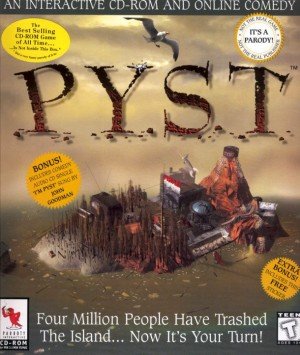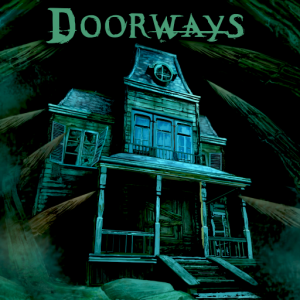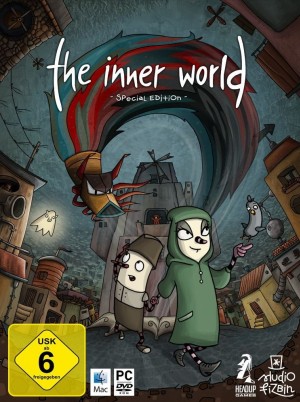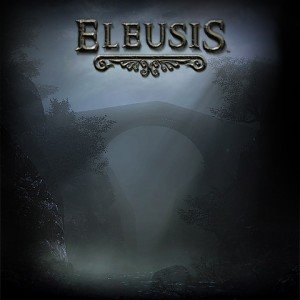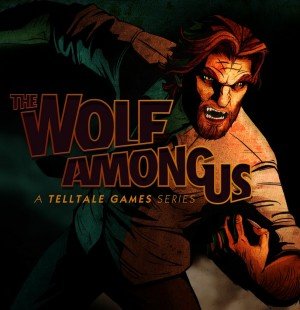Review for Violett page 2
Treading in the footsteps of such notable literary giants as Lewis Carroll and Neil Gaiman, Forever Entertainment’s Violett is a beautifully illustrated tale of teenage willfulness and the consequences of sticking your nose into mysterious corners where it doesn’t belong. Though clearly inspired by the classics, however, Violett fails to live up to its forebears with its flimsy story and characters, relying on pretty visuals and often tricky puzzle design to compensate.
Introduced via a stylish opening cinematic, Violett is a lanky, awkward teenage girl whose parents, when not busy arguing with each other, have just relocated the family to an isolated house somewhere in the countryside. Seeking refuge from their constant squabbling, Violett spends her time alone in her room. That is, until a mysterious glint coming out of a dark mouse hole catches her eye. Reaching in, she finds a strange amulet and is pulled into a miniature world of fantastic environments and odd creatures living right behind her walls.
Once she’s crossed over, a chance encounter with a fairy gives Violett the ability to manipulate certain objects telepathically, which becomes a staple of the gameplay. While navigating through the point-and-click environments, Violett does not need to be in physical contact with objects to pick them up or move them (though she does need to be in close proximity). During the course of the adventure, she’ll find and piece together segments of the amulet, which came apart upon her arrival, granting her additional powers such as short-distance levitation and the ability to withstand fire.
While the plot setup contains a heavy dose of Alice’s Adventures in Wonderland (with a dash of Coraline), the storytelling aspect of Violett sadly doesn’t continue much past the introductory cinematic. Little attempt has been made to weave an engaging narrative: interactions with the bugs, moles, birds, and other small creatures who inhabit the world are limited to “Bring me this amulet to open that gate” or “Give me the ingredients to make the soup.” Progressing through the game becomes a rote matter of solving all of an area’s puzzles to proceed to the next, with neither rhyme nor reason given for doing so. Apparently Violett knows she’ll be transported back to her home once she’s run out of rooms to clear.
As there is no map or fast-travel feature, backtracking becomes a bit of a chore. I frequently had to find an item in one area to use in another, only to return to the first area again later on for something else, passing through all in-between locations each and every time. It’s not so much that she’s slow – Violett moves at a fairly brisk clip – but each time you’re forced to retrace your steps you’ll need to repeat every action and watch each climbing/jumping/etc. animation all over again. It’s not a major flaw, but an option to fast-forward past some of these repetitive sections would have been welcome.
It turns out the only way for Violett to finally return home is to defeat the evil Spider Queen, who rules over the denizens of this magical land. Along the way, Violett will find manuscript pages scattered in various locations, providing details on the strange and whimsical citizenry with a bit of superfluous – though quite welcome – flavor text. While I assumed that these were entries in Violett’s personal journal, the in-game documentation reveals that they were actually part of her uncle’s diary. Who was her uncle? When did he enter this wondrous world? Was he able to escape? What happened to him? I never did find answers for these questions, and they never seemed to cross Violett’s mind in the least, as she never comments on discovering her uncle’s diary in this strange place.
With such a rich canvas of oddment races under the yoke of a tyrannical ruler and a diary providing insights from beyond the Void, it’s too bad the developers didn’t flesh out this world to any further degree. Everything is presented as a matter of fact, with no background or running exposition to build on it. The game’s primary focus has instead been placed squarely on its quality presentation and on puzzles that require an active imagination and, in some cases, a great deal of patience.
Violett’s graphics feature a top-notch hand-drawn aesthetic, lending a suitable air of magical realism that helps achieve the all-important suspension of disbelief. Environments are constructed of household items proportionately enlarged and arranged in such a way as to be functional. Fences are made of pencils and matches; staircases are constructed of books stacked in a spiraling sequence; garden gnomes become towering statues with menacing grins and threatening expressions. All are illustrated with lush colors and a neat, clean style that gives the game a crisp, vibrant appearance.
The world itself is an exotic amalgamation of serene waterside vistas, lush treetops, and underground mining tunnels, all mixed with the more mundane locales of Violett’s own home. I found myself eagerly anticipating each new scene, wondering what curious place I was about to discover. One moment I found myself traversing the city’s rooftops, dodging fiery chimneys, the next I was climbing an oversized anthill in hopes of an audience with the queen. At certain moments, particularly when dealing with a giant caterpillar perched regally atop a cushion in the middle of his room, it was hard not to recognize Lewis Carroll’s direct influence on the design.
Apart from Violett, there isn’t much other animation happening on-screen at any given time. Other creatures (scenes may have anywhere from none to a few) do move, but in very limited and set patterns, pacing back and forth or repeating a specific movements over and over. Flame and water do offer a few effects, and the latter in particular is well done in the lake scene, but overall the animation is limited to the protagonist’s actions. The pre- and post-game cinematics are largely similar: static cartoon screens panning past the camera, with limited animation. With one small exception early on of Violett catching a brief glimpse of her parents, there are no further cutscenes interspersed into the gameplay – a fact that further hinders any real story revelations from taking place.
Not lagging far behind the artwork is the musical score, comprised of low-key fairy tale-esque tracks that complement the game’s otherworldly feel. Each area features a unique song, but while they are generally pleasant, a few grate on the nerves a little after spending long amounts of time listening to them. However, there’s little reason beyond the score to leave the sound turned up, as the dialog – when it appears at all – consists of nothing more than a series of squawks and random vocalizations foreign to the human ear, accompanied by pictographs to actually bring across the idea of what’s being discussed.
Fans of hardcore adventure game puzzling will be pleased with the gameplay, as Violett requires some serious mental gymnastics to best its challenges. To be sure, a few common standbys make appearances, like the obligatory valve puzzle to operate a complex garden watering system, and flipping a series of switches to control the rise and descent of an elevator platform. Other than that, the puzzles are generally a mix of finding the appropriate inventory item in the environment and unraveling how to properly operate a device, but a healthy dose of creative thinking is necessary to improvise new uses for many of the familiar everyday items found.
A perfect example of this comes early on. To get to a piece of the medallion, I had to cross a water-filled basin. Unfortunately for me, the aptly named Jawesome Beaver, a cross between a beaver and a shark patrolling the water, made this task rather deadly. Obviously a raft had to be constructed using the makeshift items at hand, but even getting enough of those required a grasp of how to use the interacting dog-, cat-, and mouse-shaped pulleys and hooks to suit my purposes. Don’t be surprised if Violett requires the occasional use of a walkthrough to complete.
Apart from some genuinely difficult puzzles, other problem spots arise from a lack of feedback. In one situation, I was unable to open the path to leave the room until I used the appropriate object. However, inventory items are not labeled, and I simply didn’t recognize the item in question for what it was. And unlike in other games where inventory items may light up or react in some way when dragged over the area where they are to be used, Violett offers no such clues, effectively making it impossible to tell where to use an inventory item other than blind guessing. There is no hotspot highlighter either, though the cursor changes when hovering over an interactive object, sometimes indicating that you need to move the mouse in a specific motion to perform the necessary action.
There is a lot of promise not capitalized on in Violett. The story never lifts off the ground, and outside of the opening cinematic there is no character development, so I was stuck working my way through levels with no clear purpose. About five or six hours after I started, my efforts culminated in an anti-climactic boss encounter with an enemy whom I wasn’t familiar with and had no reason to dislike or be afraid of. (To be honest, I replayed the final scene a second time, as I thought I had encountered a glitch during the encounter due to its brevity and requirement of absolutely no action on my part!) However, those who enjoy a mental challenge will find something to like here as the puzzles are above-the-norm tricky, and the silky-smooth and bright visuals are certainly nothing to sneeze at.
(Update: Since time of writing, a "new more action-based level" has been added to the end of the game, replacing the previously non-interactive finale. This review is based solely on the original version.


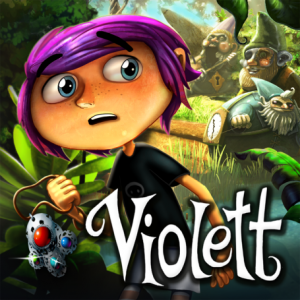
_capsule_fog__medium.png)





